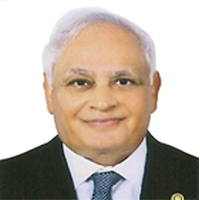Proposal for the elimination of allergies
Published on: 11th July, 2019
OCLC Number/Unique Identifier: 8185499410
A man I knew had an extreme allergy to poison ivy when he was a child. When he was about four-teen, he was hanging out with a group of his friends who dared him to eat some poison ivy. He did, and never got poison ivy again. Presumably, the ingestion of the allergen led to the development of immunity.
This might be a pathway to eliminating allergies–ingest the allergen. For example, cutting up poison ivy leaves into small pieces and crushing them with a mortar and pestle should lead to some juice in the mortar. Allow that to evaporate and have a test subject ingest the resultant powder, which, like pollen, etc., could be compressed into a pill. Wait 48 hours, and then see if the subject gets a rash when a small, unimportant area of the body is exposed to poison ivy leaves–and have Ivy-Dry handy. This could be a way to eliminate allergies–ingestion of the allergen.
Altitude sickness and Antarctic polar plateau: A review
Published on: 27th June, 2019
OCLC Number/Unique Identifier: 8172446568
Antarctica is known for its extreme environmental conditions. It is the best model to study multiple stress factors at a time on human physiological responses. Although the coastal Antarctica is on Sea level but the Antarctic plateau or pole at high altitude. Since Antarctica is also becoming tourist site it is pertinent to have a proper understanding of altitude induced illnesses. In this review we have described the human acclimatization process at high altitude of Antarctic polar plateu and South Pole. The review also highlighted the symptoms, clinical features and prevention of altitude induced diseases.
Extremely large hemangioma of the liver: Safety of the expectant management
Published on: 6th September, 2019
OCLC Number/Unique Identifier: 8257068015
Hemangiomas are known as congenital vascular malformations that can affect almost any organ or tissue, with the liver being the most common intra-abdominal organ to be involved. It is well known that hemangiomas are the most common benign tumours of the liver, and develop in about 4-20% of people, mainly young adult females. Recently, due to the dramatic rise in the use of imaging studies for different purposes, a parallel increase in the incidence of these tumours has been noticed. Most liver hemangiomas are small (less than 4cm in diameter), asymptomatic and found incidentally during abdominal operation for other indication or on radiologic studies. Giant liver hemangioma is defined as hemangioma with a diameter of more than 5cm. This unique and uncommon type of haemangioma usually poses therapeutic challenges for the treating physician, especially hepatic surgeons, due to the unclear natural history, and due to the risk of life threatening complications is yet to be established. While it is already proved by several studies that conservative management of giant hepatic hemangioma is safe, it is not known whether observation of the extremely large hepatic hemangioma (tumours larger than 10cm) is safe as well.
The aim of this article is to review the English literature to find out if conservative management of the extremely giant liver hemangioma is safe and can be recommended.
Transglutaminase inhibition: possible therapeutic mechanisms to protect cells from death in neurological disorders
Published on: 25th July, 2017
OCLC Number/Unique Identifier: 7317595344
Transglutaminases are a family of Ca2+-dependent enzymes which catalyze post-translational modifications of proteins. The main activity of these enzymes is the cross-linking of glutaminyl residues of a protein/peptide substrate to lysyl residues of a protein/peptide co-substrate. In addition to lysyl residues, other second nucleophilic co-substrates may include monoamines or polyamines (to form mono-or bi-substituted/crosslinked adducts) or -OH groups (to form ester linkages). In absence of co-substrates, the nucleophile may be water, resulting in the net deamidation of the glutaminyl residue. Transglutaminase activity has been suggested to be involved in molecular mechanisms responsible for both physiological and pathological processes. In particular, transglutaminase activity has been shown to be responsible for human autoimmune diseases, and Celiac Disease is just one of them. Interestingly, neurodegenerative diseases, such as Alzheimer’s disease, Parkinson’s disease, supranuclear palsy, Huntington’s disease and other polyglutamine diseases, are characterized in part by aberrant cerebral transglutaminase activity and by increased cross-linked proteins in affected brains. Here we describe the possible molecular mechanisms by which these enzymes could be responsible for such diseases and the possible use of transglutaminase inhibitors for patients with diseases characterized by aberrant transglutaminase activity.
Association of Toll-like receptor 2, 4, and 9 gene polymorphism with high altitude induced thrombosis patients in Indian population
Published on: 8th February, 2019
Venous Thromboembolism (VTE) is a multifactorial disease that is influenced by individual genetic background and various environmental factors, high altitude (HA) being the one. HA exposure may cause release of several damage associated molecular patterns (DAMPs), which act as ligand for various immune receptors. Previous studies on western population involving SNPs analysis of TLRs demonstrated that TLRs are involved in development and progression of several cardiovascular diseases. But, no such study has been done in Indian population in context of HA exposure. TLRs, being receptors play a significant role in manifestation and elimination of diseases by recognition of specific ligands and downstream signal transduction therefore; the genetic variation in TLRs could be implicated for imparting varying response of individuals to discrete diseases.
Therefore, in accordance with it, in present study changes in protein structures of TLR2 and TLR4 due to presence of SNP were accessed by in-silico tools to observe whether the mutation has effect on protein structure and integrity which further influencing its function. The results showed that SNP harbouring protein has decreased functional pockets, thus may be protective for disease. Taking this lead further to genotypic level, first time association between Toll-like receptor genes polymorphism and risk of high altitude induced venous thrombosis is analyzed in Indian population by PCR RFLP method. Though the result showed initial trend that TLR2 and TLR9 SNP are monomrphic in distribution and for TLR4 there was no significant difference in distribution of SNP between healthy and HA-DVT group, these SNPs have potential to be used as susceptibility markers if studied in large population size.
Fungi present in home and their impact on human health-A short review
Published on: 6th June, 2017
OCLC Number/Unique Identifier: 7317650901
It is estimated that even up to 30% of buildings worldwide may be the subject of complaints connected with the quality of indoor air. Potential sources of air pollution can be both organic and inorganic particles. This article focuses on biological air pollutants from living and dead biological sources, especially those connected with fungi. Fungi found in the indoor air of domestic dwellings in a large extent are similar in their species composition to those found on the outside of the building. Microorganisms enters into the buildings during the airing of rooms or through the different slots and can develop on the surfaces of various materials. Intensively develops in a poorly ventilated, damp and dusty environments. For this reason the exposure to the indoor air pollution might be stranger for inhabitants than the expose to the impurities of the outdoor air. Presence of fungi in domestic dwellings can be very danger because of most often is associated with allergic reactions, mycotoxins, volatile organic compounds or even with fungal infections.
Carotid artery disease: AngioCT features
Published on: 26th July, 2019
OCLC Number/Unique Identifier: 8262559463
The objective of this paper is to emphasis the AngioCT features of carotid dissection/mural hematoma. The image show an internal carotid artery with narrowly eccentric lumen surrounded by a crescent-shaped hypodense mural thickening, with a visibly enhancing vessel wall. The carotid hematoma is a hypodense mural thickening that leads to expansion of the arterial wall, compression of the lumen and release of thrombogenic factors by intimal damage. Hematoma between the intima and media causes vessel expansion diameter and a narrow eccentric lumen. Peripheral hyper density is due to the contrast enhancement of the vasa vasorum in the adventitial layer. The physician should be familiar with the imagiologic features of carotid arterial disease, due to the diferent treatment options.
Ethical Dimensions of Population Genetic Research in the Caucasus
Published on: 20th January, 2017
OCLC Number/Unique Identifier: 7317652374
The emergence and establishment of anthropological genetics as an interdisciplinary science is primarily, associated with the development of new genomic technologies. Precision genetic testing on the one hand, and the rapidly increasing number of genetic investigations on the other, have created a set of bioethical dilemmas for genetic and epidemiology research. Such research deals with persons who have the right to the protection of their personal information and confidentiality, and also concerns collective (village, region, ethnic group, state) consciousness, ethnic identity, and traditional culture, i.e., so called “ethnic pride”. In this regard, taking into consideration the results of ongoing field research, we make some recommendations for better management of relationships with individuals and communities and the preparation of questionnaires and informed consent forms that will facilitate similar research projects, especially in such an ethnically, linguistically and culturally diverse region such as the Caucasus.
Effect of common food additives on mast cell activation
Published on: 17th January, 2019
OCLC Number/Unique Identifier: 7985982264
Mast cells play a central role in the genesis and modulation of allergic and inflammatory responses. The general aim of the present work was to study the interaction between mast cells and the most common additives approved for use in foods. Dose-response studies about the effect of the main food additives (tartrazine, sodium bisulphite and sodium benzoate) on mast cell degranulation were carried out. Rat peritoneal mast cells were incubated with: 1) buffer solution or 2) stimulus. The stimuli were tartrazine, sodium benzoate, sodium bisulphite and the calcium ionophore A23187. A23187 was used as a reference mast cell secretagogue. Different doses and combinations of food additives were used. The viability of the mast cells was evaluated with trypan blue. In the incubation solutions, the release of β-hexosaminidase was quantified by colorimetric reaction and ELISA plate reader. The remaining β-hexosaminidase concentration (not released) was studied in the cells after the incubations, and morphology of the mast cells was analyzed by light microscopy with toluidine blue stain. The food additives tartrazine, sodium benzoate and sodium bisulphite did not stimulate the release of β-hexosaminidase from mast cells at any of the concentrations used. In contrast, tartrazine at concentrations of 0.1 μM and 1 μM, and sodium benzoate and sodium bisulphite at concentrations of 0.1 μM, 1 μM, 10 μM and 100 μM, significantly inhibited the basal release of β-hexosaminidase from mast cells. Considering these findings, we decided to determine the effect of these additives on the degranulation of mast cells induced by the calcium ionophore A23187. Sodium bisulphite inhibited mast cell activation induced by the calcium ionophore A23187 in this experimental model. The present study demonstrates that food additives of usual permitted use do not stimulate basal degranulation of mast cells in an in vitro model of peritoneal mast cells and that the additive sodium bisulphite inhibit mast cell activation induced by intracellular calcium increase. This food additive could represent an interesting alternative in the prevention of pathologies mediated by mast cells, as well as in the field of nutritional biochemistry.
Endothelial Repair and Endothelial Cell-Derived Secretome
Published on: 9th January, 2017
OCLC Number/Unique Identifier: 7317594407
Growing evidence supports the hypothesis that endothelial cell-derived microparticles (MPs) might contribute to the pathogenesis of cardiovascular (CV) disease. Endothelial cell-derived MPs play a pivotal role in the regulation of the endogenous repair system, thrombosis, coagulation, inflammation, immunity and metabolic memory phenomenon. There is evidence that the MPs are secreted actively accompanied to other regulatory molecules. All these actively synthetizing and secreting factors include proteins, adhesion and intercellular signal molecules, peptides, lipids, free DNAs, microRNAs, and even microparticles (MPs) are defined as cellular secretome. The proteomic profile of secretome is under tightly control of genetic and epigenetic mechanisms, which may altered a secretion of the proteins involved into MPs’ organization. Finally, this may contribute the modification of MP’s after their secretion and throughout transfer to the target cells. As a result, communicative ability of endothelial cell-derived MPs may sufficiently worse. Subsequently, cross talk between some components of secretome might modulate delivering cargos of MPs and their regenerative and proliferative capabilities via intercellular signaling networks. The aim of the review is to discuss the effect of various components of secretome on MP-dependent effects on endothelium.




